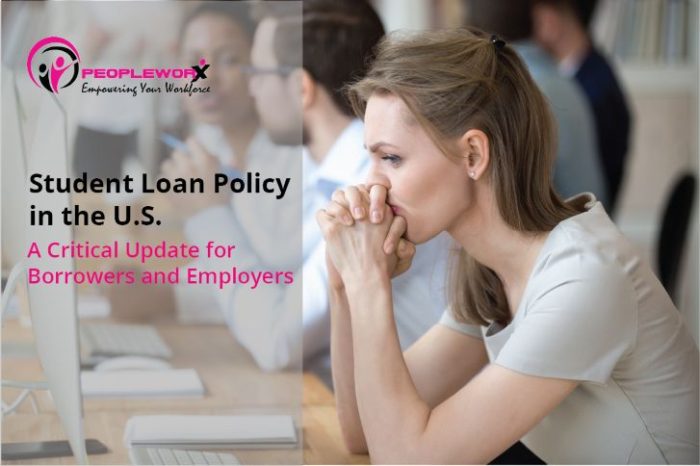The landscape of student loan policy in the United States has undergone significant changes, impacting millions of borrowers and the businesses that employ them. As of May 2025, the U.S. Department of Education has resumed aggressive debt collection efforts on defaulted federal student loans, marking the end of a five-year pause initiated during the COVID-19 pandemic.
Key Developments:
Resumption of Debt Collection:
- Approximately 5.3 million borrowers are currently in default on their federal student loans.
- The Department of Education has begun sending notices to 195,000 borrowers, warning that federal benefits, such as tax refunds and Social Security payments, may be garnished starting in early June under the Treasury Offset Program.
- Administrative wage garnishments are expected to follow for all 5.3 million defaulted borrowers later this year.
Institutional Responsibility:
- The Department has issued a ‘Dear Colleague Letter’ to colleges and universities, reminding them of their shared responsibility to support student loan borrowers under Title IV of the Higher Education Act of 1965.
- Institutions are urged to assist borrowers in repayment and promote financial literacy to prevent defaults.
Policy Shifts:
- The current administration’s policies have reversed several borrower protections established during the previous administration, including the cancellation of loan forgiveness programs and the elimination of income-driven repayment plans.
- These changes have led to increased financial strain on borrowers, particularly those from low-income backgrounds and minority communities.

Implications for Borrowers:
- Immediate Action Required: Borrowers in default should contact their loan servicers or the Default Resolution Group to discuss repayment options—such as rehabilitation or consolidation—to avoid wage garnishment and loss of federal benefits.
- Financial Hardship: Many borrowers report that the reinstated payments, potentially as high as $1,500 monthly, are unaffordable, leading to increased anxiety and financial instability.
Implications for Employers: What to Expect and How to Prepare
Employers should anticipate an increase in wage garnishment orders related to federal student loan defaults as the Department of Education ramps up collection efforts. According to recent guidance:
- Employers will begin receiving administrative wage garnishment notices instructing them to deduct a portion of an employee’s disposable income to repay defaulted student loans.
- Garnishment amounts are typically capped at 15% of disposable pay but must be prioritized according to federal and state wage garnishment rules.
- Employers are legally required to comply with these notices or face penalties, including liability for unpaid amounts.
“Businesses need to recognize that wage garnishments are a legal obligation—not optional. But they can leverage their payroll provider or processor as a critical partner in managing these deductions. A good payroll partner will automate compliance, ensure the correct calculation and priority of garnishments, and provide reporting tools that help employers meet deadlines and respond to notices without delay,” states Jonathan Pocious, CEO of PeopleWorX, a leading provider of payroll services based in Maryland.
Jonathan continues by discussing the broader role of garnishments in payroll compliance. “Garnishments are one of the most common topics we are asked about. Simply put, a garnishment is an involuntary deduction—such as child support, a lien against wages, or anything where the employee is having money taken not by their own choice. Each garnishment has its own specific rules. And as such, your payroll specialist is the best person to talk to about your specific garnishment. PeopleWorX takes care of setting this up for you, and we can even make the payment as well. If you are a current client, ask your PeopleWorX payroll specialist today if you have any garnishment that needs to be solved. We also offer a free HR audit for non-clients which can help you better understand how to comply with garnishment notices.”
This underscores that not all garnishments follow the same process or rules. Student loan garnishments have their own compliance timelines and requirements making it critical to work closely with your payroll processor to implement them correctly.

How Employers Can Support Employees During Garnishment
While wage garnishments are mandatory, employers can take proactive steps to support affected employees:
- Communicate early and transparently with employees when a garnishment notice is received.
- Offer financial wellness resources or counseling referrals to help employees navigate loan rehabilitation or repayment options.
- Educate employees on the potential to rehabilitate their loans and end the garnishment within as few as nine consecutive payments under current federal rules.
The resumption of student loan collections signals a pivotal shift in U.S. education finance policy. Employers must be prepared to handle an influx of wage garnishment orders while maintaining compliance and minimizing workplace disruption.
By partnering with their payroll processor, businesses can automate garnishment management, reduce administrative burdens, and safeguard both compliance and employee trust. Staying informed and proactive will be key to navigating this evolving regulatory environment.
Contact PeopleWorX to discover how we can help you and your employees.






